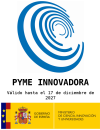Differences between Virtual Reality and Augmented Reality in Commercial and Industrial Use
Virtual reality (VR) immerses us completely in a digitally created world disconnected from the physical plane, while augmented reality (AR) incorporates virtual elements into the real world. Both are versatile technologies with a multitude of uses. They have been commonly applied in the entertainment industry, video games, and marketing for commercial purposes. However, there is a lesser-known aspect based on engineering that has the potential to make industries more profitable and safer.
Commercial Uses of Virtual Reality and Augmented Reality
Entertainment Industry
Simulation has been developed for many years in the field of entertainment and video games, where it has gained greater fame due to its widespread use and its ability to reach all kinds of audiences easily. In fact, video games have also served as an entry point for many potential developers of these technologies to experiment with them and use them as a source of inspiration for new functionalities.
Furthermore, virtual reality and augmented reality pave the way for new forms of socializing that are still being consolidated, such as the metaverse, an immersive virtual world where users can interact with each other.
Marketing and Sales: Showrooms and Virtual Catalogs
Virtual reality and augmented reality are also great allies in marketing and online sales, especially for sophisticated and expensive goods. This is because remote selling still generates mistrust since we cannot see or try the object we want to buy. However, these technologies change this by allowing us to visualize, experience, and have a much clearer idea of what we are going to buy. With VR and AR, products can be displayed in a virtualized catalog or in an environment created in a metaverse. For example, it is possible to take a 360-degree virtual tour of a potential home or a gallery of products through a virtual showroom.
Industrial Uses of Virtual Reality and Augmented Reality
To fully leverage virtual reality and augmented reality in current industrial processes, technical expertise beyond 3D modeling and virtual reality is necessary. It requires teams of highly specialized and qualified experts with engineering knowledge who can develop innovative solutions using multiple technologies in an integrated manner.
Industry 4.0, Digital Twins, and Testing
The transition to digitalized industrial production that operates with new intelligent technologies involves the use of simulation tools that help reduce costs and time while increasing safety and employee professionalism.
One of the terms used in Industry 4.0 is that of a digital twin, which refers to a detailed digital representation of a physical object, process, or even a system. Operators can simulate and test the performance of machinery before or after its construction or implementation in the real world. With this concept, a virtual counterpart of a physical object can be created, and one can navigate, for example, through an entire digitally produced scenario without any risk.
The technology also allows for various tests on how electronic components or machinery function by connecting them to a virtual simulation instead of installing them in a real production process or larger object. This helps refine decision-making while saving time and money.
Augmented Reality and IoT
Another element in the more technological industry is the Internet of Things (IoT), the interconnection of electronic devices, sensors, and information systems that are also connected to the Internet or local networks for sharing and collecting information. This concept allows for monitoring numerous production processes, and augmented reality, along with other elements of Industry 4.0, takes it a step further by creating powerful next-generation digital assistants that enable remote operation and facilitate interaction between personnel and technology. By receiving data from real electronic equipment and visualizing it digitally through augmented reality, a complete immersion based on data is achieved. This enhances the experience and facilitates decision-making.
Remote Technical Assistance: Connecting Experts and Operators at a Distance
Additionally, augmented reality offers the opportunity to add elements such as data, graphs, virtual interfaces, or animations to reality with which we can interact. It enables remote assistance services, as it allows experts to interact in the field with technicians without the need to travel. Through augmented reality, the technician receives visual instructions overlaid directly onto reality using a tablet or special glasses, while providing the expert with a complete immersion on-site without the need for physical travel.
Digital assistance enables the technician to process a higher flow of information, anticipate potential issues, and have real-time guidance, without worrying about making mistakes.
Industrial Training: Risk-free without the need to halt production
Moreover, technicians and engineers can learn to use these new tools safely and in a controlled environment, substantially increasing the human capital of high-tech companies.
The utility of virtual reality and augmented reality in acquiring experience and knowledge is enormous, as it allows for immersive, comprehensive, and detailed simulation of specific scenarios. Therefore, one of the main applications is training and professional development in risky environments or situations, as well as training in complex environments.
This learning model is completely safe, does not require interrupting any production processes, and can significantly reduce the learning curve while increasing retention of training due to total immersion. Likewise, it enhances productivity within companies.
Skylife Infinity: A Virtual and Augmented Reality Tool for Industrial Use
The possibilities offered by virtual reality and augmented reality are countless. Advancements in industrial technology are rapidly evolving and providing innovative solutions that facilitate complex processes. In this context, Skylife has developed Infinity, a comprehensive assistance tool that encompasses three major areas of action: virtual training, interactive operation guidance, and remote assistance to solve problems at a distance. In other words, it is a virtual guide that possesses all the necessary qualities to save working time, reduce travel, and act immediately in unforeseen situations.




















